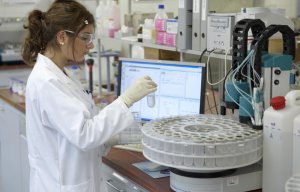
New Standard 100 by Oeko-Tex test criteria come into force
With these changes Oeko-Tex is contributing to the complete exclusion of NP, OP and alkylphenol ethoxylates from textile production.

4th April 2016
Innovation in Textiles
|
Zurich
After the expiry of the usual three-month transition period, the test criteria and limit values for Oeko-Tex Standard 100 that were published earlier this year came definitely into force on 1 April 2016.
The Oeko-Tex Association aims to support both the Zero Discharge of Hazardous Chemicals (ZDHC) initiative and the Detox campaign. With these changes Oeko-Tex is also further contributing to the complete exclusion of NP, OP and alkylphenol ethoxylates from textile production, which is a goal striven for by the industry.
With more than 150,000 certificates issued in total since 1992, the association has also made the textile production chain more aware of the need for responsible handling of potentially harmful substances in textile products and its pioneering role has contributed greatly to effective consumer protection.
The following three substances and their salts have been newly incorporated into the test parameter “perfluorinated compounds” for all OEKO-TEX product classes:
Limit values for each substance:
By this, OEKO-TEX takes into account that PFNA and its salts have been newly included in the REACh-ECHA SVHC candidate list since December 2015. At the same time, this measure also closes the gap between the substances PFOA and PFUdA, which are already restricted in Oeko-Tex Standard 100.
Ten additional tin-organic compounds have been regulated with limit values for all product classes. The substances include: monobutyltin (MBT), monomethyltin (MMT), monooctyltin (MOT), dimethyltin (DMT), diphenyltin (DPhT), tricyclohexyltin (TCyHT), trimethyltin (TMT), trioctyltin (TOT), tripropyltin (TPT) and tetrabutyltin (TeBT).
The substance di-cyclohexylphthalate (CAS no. 84-61-7) has been added to the list of softeners that are already regulated for all product classes. The Consumer Product Safety Commission (CPSC) in the US is currently making its final decision on whether di-cyclohexylphthalate will be integrated into the Consumer Product Safety Improvement Act (CPSIA).
Due to new findings as part of recent Oeko-Tex Association research activities, seven neonicotinoid substances have been added to the parameter pesticides, and as such are now explicitly mentioned in the table of single substances in Annex 5 of the Oeko-Tex Standard 100.
In addition, the substance Aldicarb, CAS no. 116-06-3, is now also regulated within the list of pesticides. The existing Oeko-Tex Standard 100 limit values for the sum of pesticide substances remain unchanged. As to the parameter chlorinated phenols, both monochlorinated and dichlorinated phenols have been newly regulated.
C.I. Basic Blue 26 (with ≥ 0.1 % Michler’s Keton or Michler’s Base; CAS no. 2580-56-5) and C.I. Basic Violet 3 (with ≥ 0.1 % Michler’s Keton or Michler’s Base; CAS no. 548-62-9) have been added to the list of prohibited colourants classified as carcinogenic in Annex 5 of the OEKO-TEX Standard 100.
Basic Green 4 (Malachite Green Chloride; CAS no. 569-64-2), Basic Green 4 (Malachite Green Oxalate; CAS no’s. 2437-29-8 and 18015-76-4) and Basic Green 4 (Malachite Green; CAS no. 10309-95-2) have been added in Annex 5 to the list of other banned dyestuffs.
The inclusion of these substances means that requirements of the SVHC candidate list, the ZDHC initiative and the Detox campaign are covered.

Business intelligence for the fibre, textiles and apparel industries: technologies, innovations, markets, investments, trade policy, sourcing, strategy...
Find out more